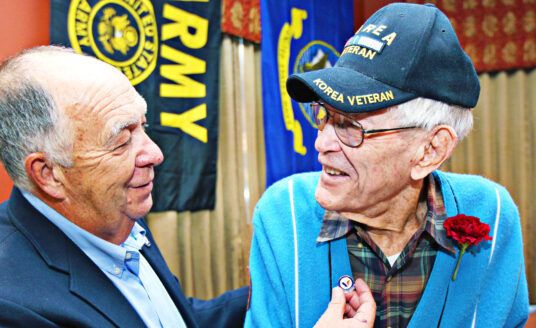What does it look like when the services and care of an assisted living community are coordinated with those of hospice care? Chaplain Dorothy Gannon with Bethesda Hospice Care offers an ideal scenario:
A woman, terminally ill with cancer and in the early stages of dementia, was living in a Bethesda assisted living community. “Sometimes she wasn’t aware that there was anything wrong with her,” Dorothy recalls. “She was amazed and somewhat bewildered at all of the people taking care of her, which included Bethesda assisted living staff and Bethesda Hospice Care staff. She thought I was from her church and was gratified that her church was doing so much to care for her.”
Each day, the woman ate with her friends in the dining room. If she was not there, one of her favorite places was at the end of a couch next to a fireplace in one of the common areas at Bethesda Hawthorne Place, greeting people as they passed.
In the last days of her life, friends visited her in her assisted living apartment. A daughter, who was retired, spent hours providing additional care to her mother. When she died, she was surrounded by family in the place she called home. “At her memorial service, people from Bethesda shared stories about her,” Dorothy says. “These recollections were treasured by her family.”
“What matters to hospice patients are people—family, friends—having them nearby and making the most of the present,” she adds. “That’s what hospice care is about.”
Two Philosophies, One Goal
Dorothy notes that assisted living staff are focused on keeping the senior active and involved with others. “The staff wants to maintain or improve the physical and mental health of the residents, so they encourage residents to leave their apartment and participate in activities,” she says.
Assisted living at Bethesda, depending upon resident needs, provide the following services:
- Assistance with activities of daily living (dressing, hygiene, etc.)
- Medication management
- Housekeeping
- Laundry services
- Transportation and outings
Hospice care is about providing comfort when a diagnosis of terminal illness of six months or less is made, and the hospice patient does not want to undergo further curative treatment. The emphasis is on comfort, the quality of the life left and pain management.
According to Dorothy, when assisted living and hospice staff come together over the care of a hospice patient/resident, the focus is on what is needed for the patient. “We talk with the assisted living staff about when and how to encourage hospice patients to take part in activities,” she says. “Perhaps the patient doesn’t have the energy. The staff can repeat the offer the next day, if appropriate, or no longer try to encourage it. We also educate about the dying process if needed so all staff are aware of what that entails.”
Frequent discussions occur between the hospice nurse manager and the director of nursing in the assisted living community surrounding changing care needs. These conversations can also include family members and the hospice patient if they are capable of attending.
According to Dorothy, if the care needs of the hospice patient exceed the parameters of assisted living capabilities, family members may consider stepping in to provide more care for their loved one, hiring private duty services to supplement the assisted living staff or moving the patient to long-term care.
What if More Intensive Care is Needed?
“At Bethesda, our assisted living staff work hard and are very committed to providing care until the life of a hospice patient ends,” Dorothy says. “They are aware that moving these people to another level of care is traumatic and physically draining for the patient and the family. This is particularly true if the patient has dementia. The disorientation that results causes severe confusion and emotional disturbance.
“Unless the hospice patient cannot receive the care that is needed or financial concerns make it unfeasible, it’s best to stay in the assisted living community where they know the staff, are familiar with the surroundings and have friends they can socialize with.”
Another Consideration When it Comes to Long-Term Care
Dorothy suggests that family members consult financial advisors and/or geriatric care managers well before funds run out for assisted living care so that other care options within the community can be explored.
To learn more about the services and amenities we can offer your senior loved ones, check out our care management page.
| With 133 years of experience, Bethesda has become a leader in senior care, offering independent living, assisted living, memory care, and skilled nursing. To see if assisted living is right for your family, tour either of our communities: Bethesda Hawthorne Place or Assisted Living at Charless Village. After meeting with our residents and highly trained staff, you will instantly feel at home. |



